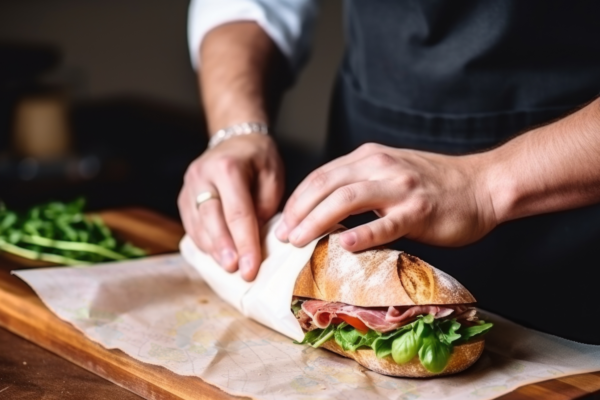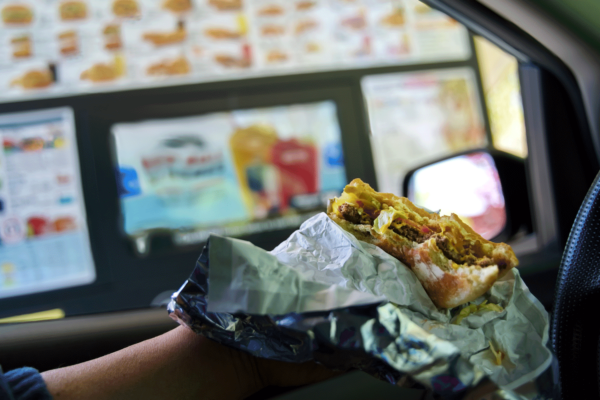Longstanding European cultural tradition emphasises structured mealtimes and classic dishes. In France, for example, a standard meal includes an appetiser and a main course followed by a dessert or cheese plate. But not even long-held cultural traditions are immune to change.
The COVID-19 health crisis has led to lasting changes in culinary trends and desires.
Consumers sought varied selections of novelty, comfort, and more health-conscious choices. One outcome of these desires was the evolution of burgers and sandwiches. These items, once considered snacks or even associated with junk food, have undergone a complete metamorphosis and are now fully embraced as a cornerstone of culinary offerings.
Datassential’s Burgers & Sandwiches report offers an in-depth look at the growing handhelds segment, and includes pricing and customer preference data from across France, the U.K., and Spain. The report shows that recent culinary changes have opened up enormous opportunities for everyone involved in the out-of-home foodservice market.
Consumer Needs Shape Current Burger and Sandwich Trends
Gone are the days when a sandwich evoked an image of cheese slices blanketed by two slices of bread. Likewise, the humble burger has graduated from a beloved classic to a member of the gourmet class.
Current trends emphasise quality, freshness, and personalisation. Consumers want to explore exotic ingredients and discover new taste profiles. Trends also show some decline in meat consumption. When meat is requested it is expected to be of a high quality. This means burgers made from grass-fed or Wagyu beef, for example. For flexitarians and those following plant-based diets, the desire is for healthy and tasty meat-free options.
Whether the burger is beef or plant-based, there is a willingness to splurge on premium products like artisan cheeses and other gourmet toppings.
Influence of European Culinary Tradition
European culinary tradition focuses on fresh, quality ingredients, careful presentation, and the art of home cooking. These values are on display in fast-casual restaurants where the speed of fast food meets the comfort and quality of upscale dining. Featured on these menus are sandwiches made from premium bread like brioche, pretzel, and even charcoal buns. 64% of those surveyed in France prefer a baguette as a carrier for the sandwich and U.K. respondents were close behind with a 50% preference for the iconic French bread. In Spain, ciabatta took the lead with 57% of respondents preferring it over other options. Homemade sauces and side dishes made from healthy, seasonal ingredients help elevate these sandwiches to a gastronomic experience.
Lasting Impact Of The Health Crisis
There is a lasting impact of the COVID-19 pandemic on the out-of-home food service market. With the explosion of delivery and takeaway sales during lockdown periods and in the aftermath when telecommuting continued to be commonplace, restaurants have had to find new ways to entice customers to return to in-person dining or continue ordering meals from home. Burgers and sandwiches evolved as the perfect item for chefs to explore their creativity and their efforts have been met with enthusiasm.
Consumers have also emerged from the crisis as a more health-conscious bunch, as evidenced by an increase in vegetarianism in some European countries. Despite expansion from meat to plant-based offerings, one thing is sure—there is a strong desire for upscale and premium products.
Price Analysis
As inflation continues to plague the economy, restaurants must decide how to justify price increases. One such way is to offer complimentary elements to classic burger and sandwich offerings. Side dishes can enhance the flavour of the sandwich and improve the culinary experience. A creamy coleslaw paired with a rich sandwich or crunchy tortilla chips paired with a hearty burger can justify premium prices.
The Virtual Experience
A strong online presence and concise menus make it easy for consumers to see what’s available. Restaurants can capture images of their decor and pleasing photos of menu offerings to give customers a sense of what awaits.
Raphaelle Agier is Datassential’s Vice President of Customer Experience for EMEA and Latin America.
There’s much more to learn in the full report, including the impact of Gen-Z (the trendsetters in the fast-casual dining sphere,) how consumption patterns vary across demographics and countries, and operator considerations for image, brand awareness and digital marketing.
If you’d like access to the full report, click here.






